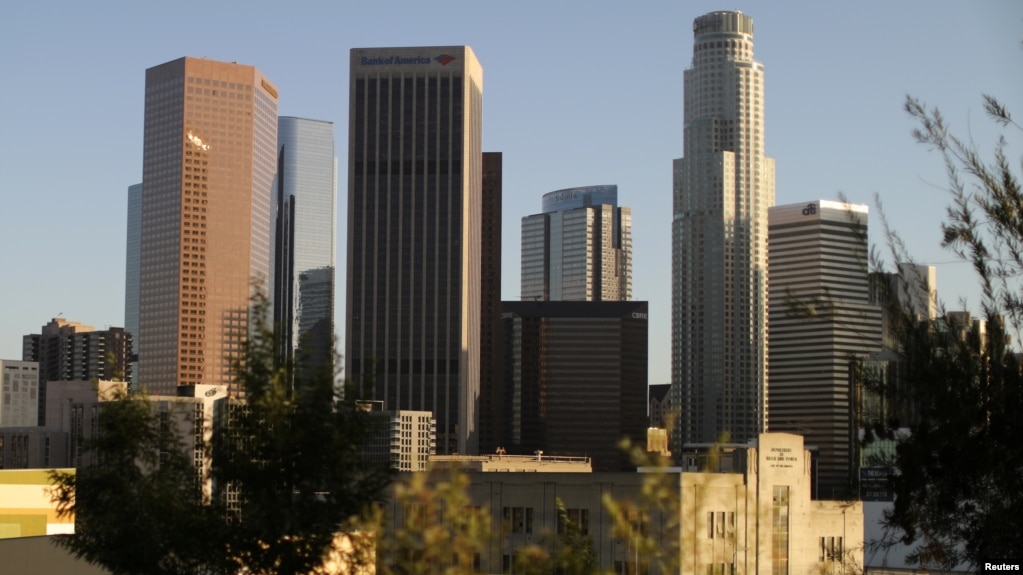You can also watch the video by clicking on the Play Button
12/18/2017
12/10/2017
Question time at seminars

ONE theory to explain the low share of women in senior academic jobs is that they have less self-confidence than men. This hypothesis is supported by data in a new working paper, by a team of researchers from five universities in America and Europe. In this study, observers counted the attendees, and the questions they asked, at 247 departmental talks and seminars in biology, psychology and philosophy that took place at 35 universities in ten countries. On average, half of each seminar’s audience was female. Men, however, were over 2.5 times more likely to pose questions to the speakers—an action that may be viewed (rightly or wrongly) as a sign of greater competence.
This male skew in question-asking was observable, however, only in those seminars in which a man asked the first question. When a woman did so, the gender split in question-asking was, on average, proportional to that of the audience. Simply handing the microphone to a woman rather than a man when the floor is opened for questions may make a difference, however small, to one of academia’s most intractable problems.
12/09/2017
Miami's Coastal Future
 |
| Rising sea levels threaten Miami and coastal cities around the world (SBaragona/VOA) |
Climate change is having a number of effects on cities around the world, including rising sea levels. And, this is an especially big problem for coastal cities. City officials must now prepare for higher tides on their coasts.
The American city of Miami is one of the cities in North America most at risk for rising sea levels. Located in South Florida, Miami is home to nearly 3 million people and billions of dollars in land and buildings. The waterfront is central to Miami's culture and economy. But as the seas rise with climate change, the water will not stay put and large parts of South Florida are in danger of being underwater in the coming years.
Across Biscayne Bay, the City of Miami Beach is making improvements -- raising streets, adding water pumps and more. It is costing the city a lot of money.
Eric Carpenter is the director of public works for Miami Beach. He says local communities will spend 500 million dollars for the improvements.
"Thankfully, our residents, the folks that are footing the bill for this work, realize that the cost of doing nothing is much greater."

City of Miami voters just approved a 200-million dollar project to improve Shorecrest and elsewhere.
And the city has proposed solutions some residents are not happy about. One of the proposals is to redesign whole neighborhoods.
A possibility officials are discussing with residents is for the city to buy homes in some places where flooding is a problem. The city will then turn that land into parks of grassland that could hold the water.
However, that idea is not an immediate fix, says Miami's chief resilience officer, Jane Gilbert.
"It's really much more long-term. And we feel the more we are having those conversations now, the easier it is for everyone to adapt over time."
Over time, the city may need to take bigger risks. Miami's future depends largely on how much, and how fast, the oceans rise.

Caroline Lewis leads the climate activism group, the CLEO Institute. She says cities cannot avoid the need to move inland. "We're going to have to leave sooner or later. However, a well-planned withdrawal should include measures to keep people safely in place for as long as possible."
Miami Beach public works director Eric Carpenter says solutions will depend on the willingness of city leaders to deal with the fear of change and find ways to pay for improvements.
"There's an engineering solution to every problem."
That may be a question South Florida and the world's coastal cities will be asking for many years to come.
Ford's New Self-driving Vehicle
| Ford Motor Co. President of Global Markets Jim Farley |
DETROIT — Ford Motor Co will begin testing its latest self-driving vehicle technology next year in at least one city but will not change its plan to begin commercial production until 2021, the company said.
The automaker will test self-driving prototypes in various pilot programs with partners such as Lyft, the ride services company in which rival General Motors owns a minority stake, and Domino's Pizza.
In a blog post, Jim Farley, president of global markets, said Ford will test new business models that involve its self-driving vehicles, including the movement of people and goods.
Ford is shifting production of a future battery electric vehicle to Mexico to free up capacity at its Flat Rock, Michigan, plant to build the self-driving vehicles in 2021, according to spokesman Alan Hall.
The electric vehicle, whose more-advanced battery system will enable a driving range of more than 300 miles, will go into production in 2020 at Ford's Cuatitlan plant, which will also build a new hybrid crossover vehicle around the same time.
At the Flat Rock plant, Ford is boosting investment to $900 million from $700 million and adding 850 jobs.
Unlike the full electric vehicle from Cuatitlan, the self-driving vehicle from Flat Rock will use a hybrid system with a gasoline engine and an electric motor, Hall said.
12/03/2017
Paris Fountains (audio)
You can also listen to this audio file by clicking on the Play Button

12/02/2017
Los Angeles - a city of the future (article)

From cell phones and cars to televisions and refrigerators, more devices are being connected to the Internet.
Los Angeles, the second largest city in the United States, is planning to use the prevalence of these “Internet of Things” devices as a testing ground for becoming a city of the future.
Los Angeles is a part of a consortium called “I3” that includes the University of Southern California (USC) and tech companies. This partnership is developing and will soon test an Internet of Things system. It aims to connect sensors placed around the city with other connected devices to make L.A. a smart city.
It is an endeavor that will also rely on residents’ participation, said Raman Abrol of Tech Mahindra, one of the I3 tech companies that will provide a platform for an online marketplace called Community Action Platform for Engagement or CAPE.
“Communities can collaborate with businesses and cities and share data in a manner where privacy’s enforced,” Abrol said.
“By putting computers in parking meters, you already have computers in your car, and you have computers in the street lights. The ability to connect them to the Internet of Things allows a better way for your car to know where parking spots are available, allows better for it to communicate when street lights should turn green to maximize traffic flow,” said Ted Ross, chief information officer for the city of Los Angeles.
The I3 is an Internet of Things integrator. Through I3, Los Angeles is working with the University of Southern California and vendor partners to aggregate the data and give us a better ability to make decisions, decisions to maximize traffic flow, decisions to help reduce crime, decisions to help improve business prosperity,” said Ross.
As connected devices become more ubiquitous and the flow of personal data increases, privacy and security concerns will be more scrutinized.
“I think that this is one piece of a huge emerging problem, of figuring out how we protect privacy and limit government power in an era of rapidly expanding information availability and rapidly expanding data processing abilities. So it’s not just that there are more and more data points that are available for the government to look at. It is also that we are rapidly expanding our ability to analyze data,” said Stanford University Law School professor, David Alan Sklansky.
“The more powerful the technology, the more powerful the unintended consequences,” said Yannis Yortsos, dean of the USC Viterbi School of Engineering.
“There has to be regulation so that they have legal and ethical issues taken into consideration as well,” Yortsos added.
In Los Angeles, people will choose whether they want to provide data to the city.
The smart city experiment will begin at the University of Southern California and expand to the city of Los Angeles. Some of what works for the program will be made available for other cities to use.
11/26/2017
Coffee and London's Buses (article)
 |
| (Photo: Shell and bio-bean 2017 – Ed Robinson/Shell) |
Royal Dutch Shell and Bio-bean, a clean technology company, said on Monday
they will use waste grounds to help fuel some of London’s buses.
A
new biofuel, which contains part coffee oil, will be added to the London bus
fuel supply chain where it will be used without the need for modification, the
companies said in a statement.
Bio-bean and
partner Argent Energy have so far produced enough coffee oil to power one bus
for a year. 6,000 litres of coffee oil can help power the equivalent of one London bus for a year.
Bio-bean said the
average Londoner drinks 2.3 cups of coffee a day, producing over 200,000 tons
of waste a year. The company can collect this waste and then dry and process it
to extract coffee oil.
“It’s a great
example of what can be done when we start to reimagine waste as an untapped
resource,” bio-bean founder Arthur Kay said.
London
Transport operator is already using a fuel made with used cooking oil from the
catering industry.
London’s mayor, Sadiq Khan,
said last month that his city has a “health crisis….caused directly by
poor-quality air.” The government is taking steps to discourage people from
driving cars that do not meet European Union emissions requirements.
11/25/2017
Me, myself and iPhone

THE final bell rings at a high school in downtown Los Angeles, and nearly every pupil spilling onto the pavement either clutches a smartphone or studies a screen, head bowed. A group of boys strolls down the street laughing at a YouTube video, while a girl waiting for her lift home catches up with the Kardashian sisters on Instagram. Since 2007, when Apple released the first iPhone, such scenes have become the norm in America. The Pew Research Centre found that three-quarters of teens have access to a smartphone. According to one Facebook executive, millennials look at their phones on average more than 150 times a day.
The many hours young people spend staring at their phone screens might be having serious effects, especially on young girls, according to Jean Twenge, a psychology professor at San Diego State University and author of “iGen: Why Today’s Super-Connected Kids Are Growing Up Less Rebellious, More Tolerant, Less Happy”.
By scrutinising national surveys, with data collected from over 500,000 American teenagers, Ms Twenge found that adolescents who spent more time on new media—using Snapchat, Facebook, or Instagram on a smartphone, for instance—were more likely to agree with remarks such as: “The future often seems hopeless,” or “I feel that I can’t do anything right.” Those who used screens less, spending time playing sport, doing homework, or socialising with friends in person, were less likely to report mental troubles.
As Ms Twenge herself concedes, the study does not prove causality. It is possible that another force is behind the increased diagnosis of depression among adolescents, and that sad teenagers are more likely than their happy peers to seek refuge in their phones. But a growing body of scientific evidence supports the idea that social media can inspire malaise. One study published in 2016 asked a randomly selected group of adults to quit Facebook for a week; a control group continued browsing the site as usual. Those who gave up Facebook reported feeling less depressed at the end of the week than those who continued using it. Another experiment published in 2013 found that the more participants used Facebook, the gloomier they felt about their lives. Additionally, it showed that feeling blue did not lead people to increase their Facebook use.
Not all studies are so damning. Past research suggests that social-networking sites can promote happiness if used to engage directly with other users, rather than just to covet glossy photos of someone else’s exotic holiday or lavish wedding. This distinction is a reminder that social media is what users bring to it—their attitudes shape their experiences, both on and offline. “It’s pretty easy to romanticise someone’s life based on their Snapchat or Instagram,” reflects Sarah, a junior at high school in Los Angeles. “I try to remind myself that it’s filtered. People only post what they want you to see, so it can seem like their life is better than yours.” Nicole, another junior, agrees. But when asked if she has ever considered deleting her social-media accounts, she looks perplexed. “No. I would feel lost.”
From The Economist
11/19/2017
The rich get richer and millennials miss out

Global wealth rose by 6.4% in the 12 months to June, the fastest pace since 2012. And the ranks of the rich expanded again, with 2.3m new millionaires added to the total, according to the Credit Suisse Research Institute’s global wealth report.
The report underlines the sharp divide between the wealthy and the rest. If the world’s wealth were divided equally, each household would have $56,540. Instead, the top 1% own more than half of all global wealth. The median wealth per household is just $3,582; if you own more than that, you are in the richest 50% of the world’s population.
U.S.A. continues to dominate the ranks of millionaires with 43% of the global total. Both Japan and Britain had fewer dollar millionaires than they did in June 2016, thanks to declines in the yen and sterling. Emerging economies have been catching up in the millionaire stakes; they now have 8.4% of the global total, up from 2.7% in 2000.
In the 12 months covered by the report, the biggest proportionate gains in wealth occurred in Poland, Israel and South Africa, thanks to a combination of stockmarket and currency gains. Egypt is by far the biggest loser, having lost almost half its wealth in dollar terms. Switzerland is still the country with the highest mean and median wealth per person.
There is a wide generational gap: millennials (those who reached adulthood in the current millennium) have a lot of catching up to do in the wealth stakes. Americans currently aged between 30 and 39 years of age have amassed 46% less wealth on average in 2017 than in 2007.
Higher student debts and the difficulty of getting on the housing ladder have made it harder for millennials to build a nest-egg. Meanwhile, baby-boomers are fast moving into retirement. When baby-boomers want to cash in their assets, they may find millennials can’t afford to buy them at current prices.
From The Economist
11/13/2017
The World’s First Autonomous Ship
- What
A Norwegian container ship called the Yara Birkeland will be the world’s first electric, autonomous, zero-emissions ship.
With a capacity of up to 150 shipping containers, the battery-powered ship will be small compared to modern standards (the biggest container ship in the world holds 19,000 containers, and an average-size ship holds 3,500), but its launch will mark the beginning of a transformation of the global shipping industry. This transformation could heavily impact global trade as well as the environment.
- Who
The Yara Birkeland is being jointly developed by two Norwegian companies: agricultural firm Yara International, and agricultural firm, and Kongsberg Gruppen, which builds guidance systems for both civilian and military use.
- How
The ship will be equipped with a GPS and various types of sensors, including lidar, radar, and cameras—much like self-driving cars. The ship will be able to steer itself through the sea, avoid other ships, and independently dock itself.
- How Much
Building the ship will cost $25 million, which is about three times the cost of a similarly-sized conventional ship. However, the savings will kick in once the ship starts operating, since it won’t need traditional fuel or a big crew.
- When
Self-driving cars aren’t going to suddenly hit the streets straight off their production line; they’ve been going through multiple types of road tests, refining their sensors, upgrading their software, and generally improving their functionality little by little. Similarly, the Yara Birkeland won’t take to the sea unmanned on its first voyage, nor any of its several first voyages, for that matter.
Rather, the ship’s autonomy will be phased in. At first, says “a single container will be used as a manned bridge on board. Then the bridge will be moved to shore and become a remote-operation center. The ship will eventually run fully on its own, under supervision from shore, in 2020.”
Kongsberg CEO Geir Haoy compared the ship’s sea-to-land bridge transition to flying a drone from a command center, saying, “It will be GPS navigation and lots of high-tech cameras to see what’s going on around the ship.”
Interestingly, there’s currently no legislation around autonomous ships (which makes sense since, well, there aren’t any autonomous ships, either). Lawmakers are getting to work, though, and rules will likely be set up by the time the Yara makes it first fully-autonomous trip.
- Where
The ship will sail between three ports in southern Norway, delivering Yara International fertilizer from a production facility to a port called Larvik. The planned route is 37 nautical miles, and the ship will stay within 12 nautical miles of the coast.
- Why
The United Nations’ International Maritime Organization estimates over 90 percent of the world’s trade is carried by sea, and states that maritime transport is “By far the most cost-effective way to move en masse goods and raw materials around the world.”
But ships are also to blame for a huge amount of pollution; one study showed that just 15 of the world’s biggest ships may emit as much pollution as all the world’s cars, largely due to the much higher sulfur content of ship fuel. Oddly, shipping emission regulations weren’t included in the Paris Agreement.
Besides reducing fuel emissions by being electric, the Yara Birkeland will supposedly replace 40,000 truck drives a year through southern Norway. Once regulations are in place and the technology has been tested and improved, companies will start to build larger ships that can sail longer routes.
You can also watch the video by clicking on the Play Button
Article from Singularity Hub
The Highest Paid Athlete in History
Historian Peter T. Struck says that Diocles, a Lusitanian Spaniard who lived from 104 to 146 AD, earned 35,863,120 Roman sesterces in his lifetime - a figure that would amount to the $15 billion in today's money. The number is inscribed on a monument in Rome, erected for Diocles by his fans at the end of a 24-year career.
The most famous races took place at Circus Maximus, a sports arena in Rome. Drivers generally came from lower social classes and affiliated with teams. The colors of the team jerseys - Reds, Blues, Whites and Greens - made it easier for fans to keep up with and root for their favorites. For the large majority of his chariot-racing life, Gaius Appuleius Diocles was a Red.
Races began when the emperor dropped his napkin and ended seven breathless laps later. Those who didn't get maimed or killed and finished in the top three took home prizes.
As a charioteer, Diocles was known for a strong final dash, says Struck. His wardrobe consisted of a leather helmet, protector for the chest, shin guards, a jersey and a whip. He also carried a curved knife to use on opponents or if he got tangled up in the reins as a result of a fall.
From 4,257 four-horse races in which he competed in, Diocles won 1,462. He also placed in another 1,438 races (mostly second place)
If you're in the mood for some chariot racing, here's the classic clip from the 1959 film Ben Hur:
You can also watch the video by clicking on the Play Button
Article from Big Think
11/07/2017
11/05/2017
New York to Replace MetroCard

First, there were little paper tickets that cost a nickel. Then there was the nickel itself, because until just after World War II, a nickel was the only thing that made subway turnstiles go round. Then came the dime, followed by the token. And, since the 1990s, there has been the Metro Card, recognizable, bendable, losable and not always reliable.
Now that familiar symbol of daily life is on the way out.
Last Monday, the city’s transit system took a significant step toward a more modern way for passengers to pay their fares. Starting late next year, they will use cell phones or certain kinds of credit or debit cards at the turnstiles in the subway or the fareboxes on buses.
A committee of the Metropolitan Transportation Authority approved a $573 million contract for a new fare payment system adapted from the one in use for several years on the London Underground and London’s commuter railroads. New electronic readers will be installed in 500 subway turnstiles and on 600 buses in New York beginning late next year and will reach the rest of the city’s subway stations and buses by late 2020.
The 5.8 to 6 million people in New York City that get on the subway every day will no longer have to face frustrating waits in long lines at card-dispensing machines in subway stations, though there will still be machines for people who do not have cellphones or credit or debit cards.
The push to modernize the way fares are paid comes during a disastrous year for the subway system, with delays, rush-hour malfunctions and worse: a train derailment in Manhattan in mid-June, that injured dozens of people and raised concerns over whether the subway was even safe. Service deteriorated so much that Gov. Andrew M. Cuomo declared a state of emergency in June.
The new system will replace the MetroCard, but MetroCards will not be phased out until 2023 — 30 years after they replaced tokens for subways and buses. Until then, passengers can pay their fares the new way or with a MetroCard.
The transit agency is hiring the same company that designed the system in London, which is also the company that developed MetroCards a generation ago. In London, the card that riders use is called the Oyster. In New York, the name has yet to be determined.

.
NYC Floodgates (video)
When Hurricane Sandy hit New York City in 2012, water flooded both car and train tunnels. The water did extensive damage to the electrical systems and wall and ceiling panels of the tunnels. Some train lines were delayed or closed for months. Now, the Metropolitan Transportation Authority is installing heavy, metal floodgates that can be closed during big storms, to attempt to keep water out of the tunnels.
You can also watch the video by clicking on the Play Button
11/03/2017
11/02/2017
10/29/2017
10/25/2017
Venice Marathon (audio)
You can also listen to the audio file by clicking on the Play Button
You can also watch the video by clicking on the Play Button
Subscribe to:
Posts (Atom)




























